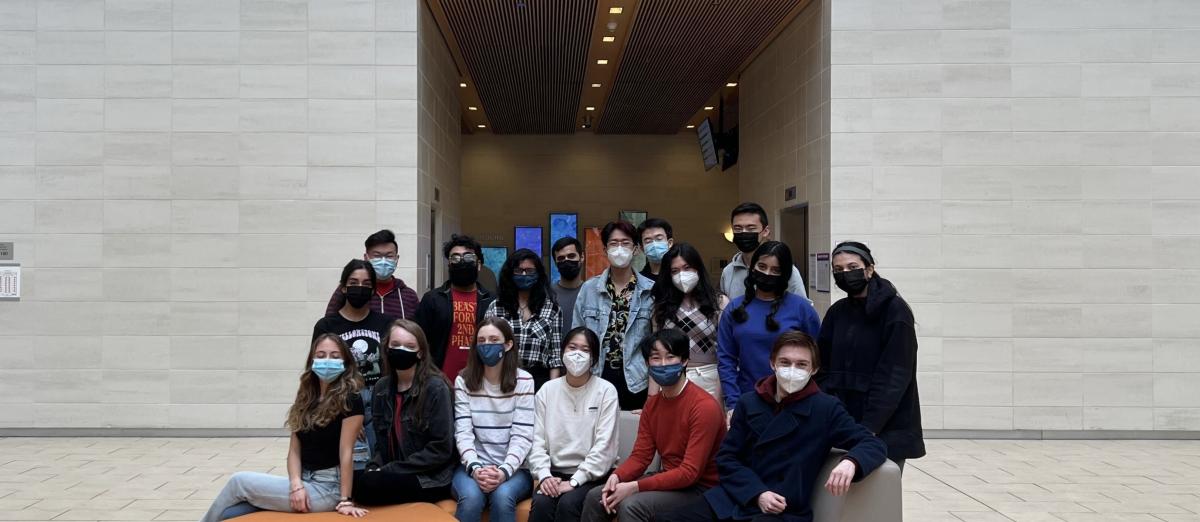This story is one in a series of three profiling UBC students who are presenting projects at the International Conference of Undergraduate Research (ICUR) Sept. 27 to 29. Hosting the in-person and online gathering focused on approaching research from an interdisciplinary perspective are England’s University of Warwick and Monash University in Australia. Students had to apply for approval as a presenter.
Imagine a type of wheat able to withstand soaring temperatures and parched soils. That’s what Myles Osenton is developing with the UBC iGEM team. He is part of UBC’s International Genetically Engineered Machine, a branch of a huge global network focused on using synthetic biology — in other words, biomedical engineering at a cellular level — to make living systems fulfill certain tasks. And in this case, that is making wheat more resistant to drought, heat and stress conditions. Osenton will present UBC iGEM’s annual research at ICUR alongside Brenda Ma. “Last year was all about using salmonella to detect changes in microenvironments surrounding tumours,” he says. “This time, we’re aiming at the climate change, global warming side of things, and finding ways to mitigate the effects on our food systems.”
Growing up with Canadian diplomat parents, Osenton, 19, most recently called Beijing, China home. He has just shifted his UBC Vancouver undergraduate degree from biochemistry and chemistry to physics, and is currently in his second year. He talked with us about his research and findings.

UBC iGEM team photo taken on March 6, 2022 at the Life Sciences Institute, UBC
L-R, top to bottom: Parneet Sekhon, George Tang, Umar Ali, Anjali Parthasarathy, Ali Murtaza, Patrick Lee, Edward Li, Michaela Samanta, Helia Jafari, Kimia Rostin, Janella Schwab, Meriwether Morris, Hannah Illing, Brenda Ma, Oliver Hong, Myles Osenton (Note: This is not an updated team roster, as some current members are not present and some members in the photo are not currently on the team)
What the problem is:
Increasing temperatures and the frequencies of devastating weather events, such as floods, wildfires and drought, because of climate change and global warming are making serious impacts on our food systems. Lots of our agriculture is not necessarily prepared to handle these news stresses rapidly increasing.
How this research can help:
The best way to ensure we still have enough food and not massive supply chain issues, is for us to genetically engineer food, so we are not impacted as much by these events. Wheat is only one example of this. We can’t try to genetically engineer all plants. We chose one quite relevant to BC and of high impact, so our work would have significance. What we have been working on is looking at creating heat-inducible systems. As soon as there’s a high-temperature event, it activates a genetic circuit which can control how much stress the plant is under from those factors. We take building blocks of DNA – such as promoters or specific genes of interest — and piece them together in different ways. It’s like taking pair of scissors and glue, and sticking something together in a new way. At some point, the temperature gets too hot. But it will be able to withstand, for instance, increasing how long it can go without water by a margin. That might be the saving grace for keeping the plant alive, so an actual harvest can happen.
Overarching goal:
To secure our food supply by minimizing the effects of climate change; to identify problems already affecting our food supply and to address those using synthetic biology.
What’s next?
Now is a big left turn for me! It’s not related at all to biology. The field I hope to go into is astrochemistry and astrophysics: the study of interstellar bodies and molecules in space. I hope to look at how reactions occur around high-energy bodies, such as neutron stars and black holes, and pushing physics and chemistry to their extremes, then seeing what happens at these interesting foci.
Piece of advice:
The best way to find out if you are suited to a field, is to go and get experience.
Inspiration:
The world of physics doesn’t have the same explicit applicability as drug research does; making its relevancy to regular life when everything is billions of years away has always been a problem. But, a lot of technology we have on Earth, has come from space-related research. Many reasons we understand how climate change works is by studying the atmosphere on our planet and on others. Or the recently released James Webb space telescope was momentous, opening so many doors. Those examples are where we really push science and our understanding at a base level: particle accelerators, massive telescope arrays. I think where we try to explore something so obscure and out of what we’re used to, that is where our understanding of everything originates. One single discovery can break our entire understanding of things. Who knows?
Learn more about the International Conference of Undergraduate Research.
Find out about the UBC Department of Physics & Astronomy.
